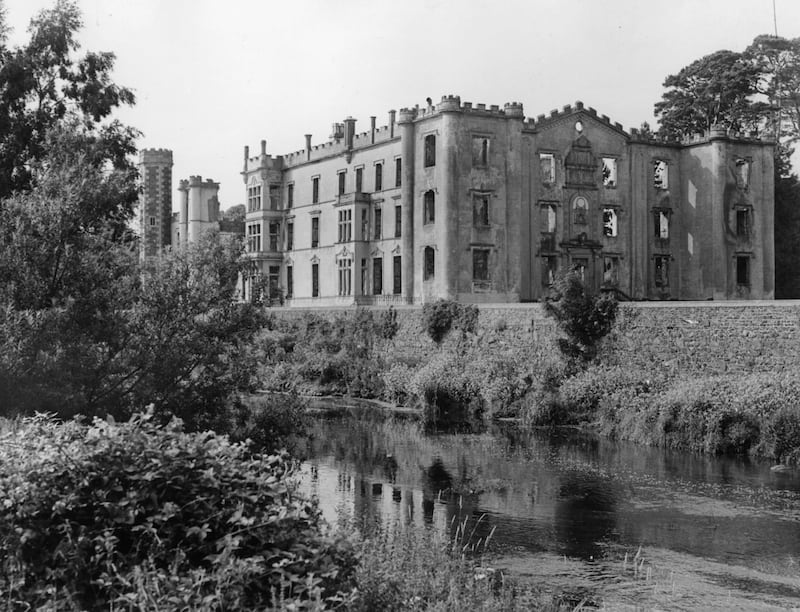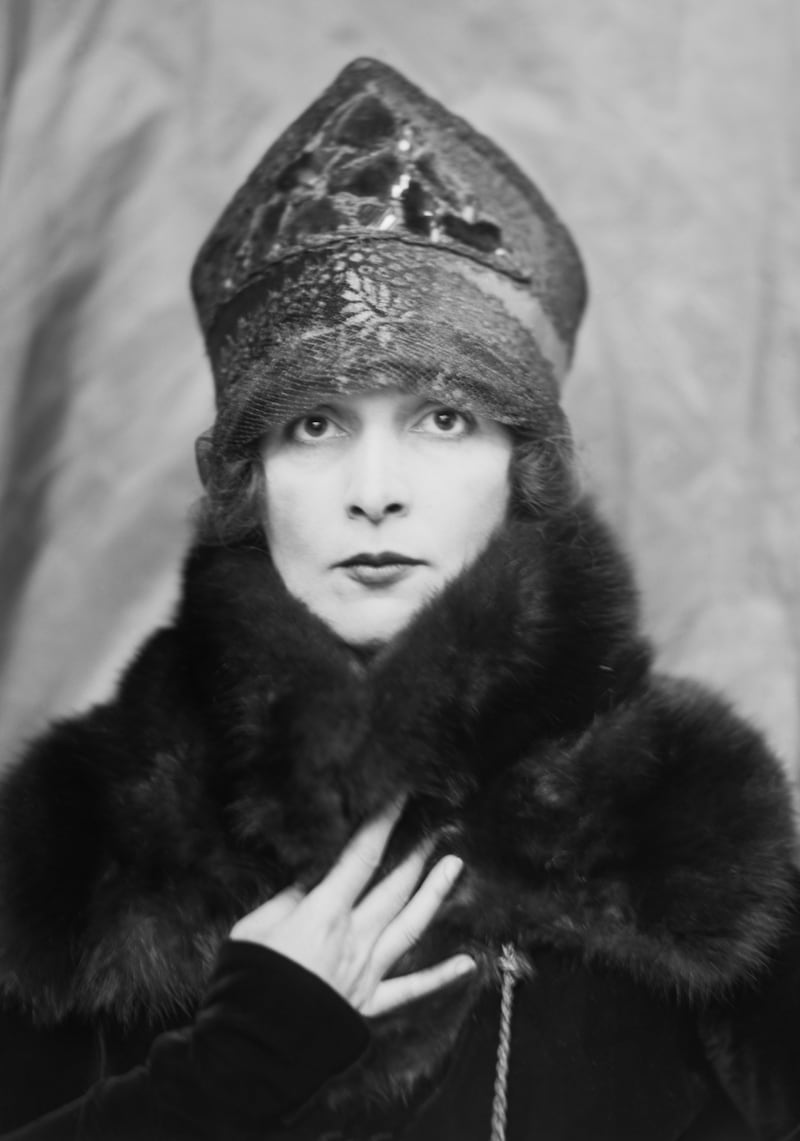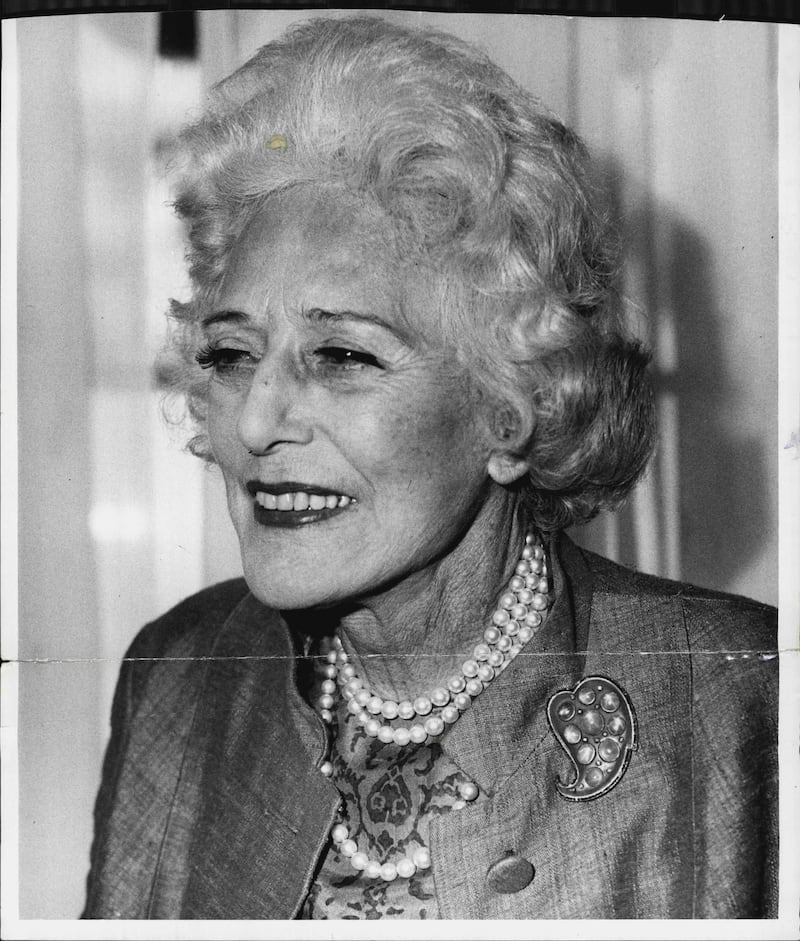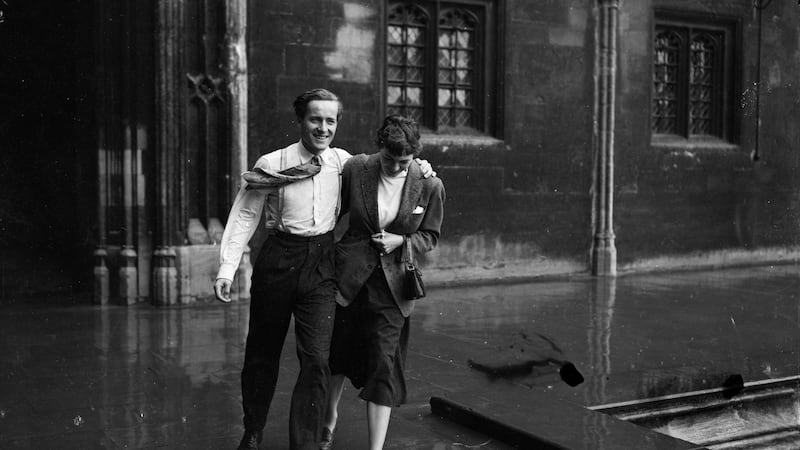During the first part of the 20th century four of the 10 women featured in my book, She Who Dares: Ten Trailblazing Society Women, captured the maelstrom of a changing Ireland. From their militant views and meddling in politics, to the preservation of buildings, the country gave them a sense of power and purpose.

Jean Massereene
The year was 1912 and Jean Massereene, the Scottish wife of Algernon Skeffington, the 12th Viscount Massereene and 5th Viscount Ferrard, chatelaine of Oriel Temple, in Co Louth, wanted to be more than the toast of Dublin society. "Men would give women a higher place if she demanded it, and it would be well for her if she did," she said.
Born in 1883, she was the eldest daughter of Sir John Stirling Ainsworth, an industrialist and Liberal MP for Argyllshire who voted for the enfranchisement of women. Regardless of her father’s advanced views, Jean did what was expected of her; she came out as a debutante, and married at 21.
Politically minded, though her chief interests veered to ghost hunting, the “Irish Question”, as HH Asquith referred to it, brought her into a man’s arena. Opposed to nationalism, she left Oriel Temple, built for Lord Massereene’s great-great grandfather, John Foster, the last Speaker of the Irish House of Commons, and moved to her husband’s family seat, Antrim Castle. A short time later, Lord Massereene retrieved Foster’s chair and mace from the National Museum of Ireland, as he did not want nationalists claiming it for themselves.
From Antrim Castle Jean charmed Sir Edward Carson, leader of the Unionist Party and founder of the Ulster Volunteer Force, and supported his bid to prevent Home Rule. Two years later he returned to Antrim Castle to inspect 3,000 men from the south Antrim battalion of the UVF, of which Lord Massereene was given command.
A rare female voice in politics, with Carson’s encouragement she founded a corps of nurses, the Volunteer Aid Attachment Corps, and trained for five weeks with the Red Cross as a measure against civil unrest. It resulted in death threats, prompting her to keep a pistol next to her bed. Infuriating nationalists were her articles, written from a unionist perspective, which a journalist called “a perversion of Irish history”, particularly her speech: “Let’s arm ourselves that Ulster will never surrender an inch of her soil or title of right to the insidious bloody foe.”

On October 28th, 1922, Antrim Castle was set alight by suspected IRA militants. One of the items lost in the fire was Foster’s chair, and the Massereene fortune crumbed afterwards. It was therefore ironic, that Jean left Ulster for the Isle of Mull, a year after Northern Ireland was created. In many ways she had gambled, and lost.

Hazel Lavery
Opposing Jean Massereene's ideology was Hazel Lavery, the American wife and muse of Sir John Lavery, who romanticised the land of her Galway ancestors and described herself as "a simple Irish girl". Furthermore, she changed her birthday to St Patrick's Day, spoke with a brogue, and was thrilled when Asquith, referring to her obsession, called her "The Queen of Ireland". She sympathised with the Home Rulers, and in 1916 sat in the public gallery during the trial of Sir Roger Casement and was haunted by the verdict of a death penalty.
By 1920 Hazel was fixated with Michael Collins. They would meet a year later, after she suggested her London home, 5 Cromwell Place, as a neutral meeting place for Downing Street and the Dáil Éireann, of which Collins was Minister for Finance, to discuss the Anglo-Irish Treaty and establishment of an Irish Free State. As their friendship developed, he sent her poetry and she became his confidante. She advised him to introduce independence slowly and accept the British government’s conditions of a Free State which was part of the Commonwealth, and therefore members of the Dáil had to swear an oath to King George V.
Many believed Hazel had encouraged Collins to betray his comrades, and in 1922, when the Irish Civil War broke out, he appointed a bodyguard to protect her. Hugh Kennedy, the first Attorney General of the Free State, wrote to Hazel, asking that she keep her distance from Collins, then commander-in-chief of the Free State Army. Responding to Kennedy, she begged him to let her “hold the end of the reins . . . so I may imagine I am guiding the splendid studs that you will control and handle so well”. Unbeknownst to Kennedy, Collins sent her a poem, calling her his “little bird, little love”.
A year later Hazel visited Ireland and spent a secret weekend with Collins, who was en route to Cork. It was to be their last meeting, as, on August 22nd, 1922, he was assassinated in Béal na Bláth. “I knew it,” she said of his death, “I saw him in a dream, his face covered with blood.”
Following Collins’s death, she befriended Kevin O’Higgins, vice-president of the provisional government. He sent her poems and love letters, one in particular read: “I want you, I want you, I want you.” As a symbol of his admiration he invited her to visit the Dáil, to listen to questions put forward by visitors in the gallery. However, O’Higgins was to suffer the same fate as Collins, when, walking to Mass, he was fatally shot.
Referring to Ireland as “that most lovely and cruel country”, Hazel no longer felt part of Irish politics and leaders ignored her invitations to Cromwell Place. “I’m tired of fighting Irish battles on English soil,” she said. Certain of her place in its history, her likeness was used on the Free State’s banknotes.

Enid, the Countess of Kenmare
It was not conflict but Ireland's neutrality in the second World War which brought Enid, the Countess of Kenmare, to live at Killarney House, her husband's seat in Co Kerry. An Australian wine heiress (her grandfather founded Lindeman wines), her fortune was bolstered by the deaths of four rich and titled husbands – the first and third, Roderick Cameron and Viscount Furness, were shipping magnates and among the richest men in the world.
It was her money which attracted Valentine Browne, the 6th Earl of Kenmare; since 1937 he had been planning a golf course on his estate, transforming the mountains and lakes of Killarney into a tourist attraction. Penniless and divorced from his wife, the courtesan Doris Delevingne, for years he had been in pursuit of Enid, but, as she put it, “My husband or his wife got in the way.” They were married in 1943, and Kenmare promised to sign Killarney over to her.
At Killarney Enid found safety from the Blitz and she grew to love Ireland. Lurking in the shadows was her mother-in-law, whom she described as “a sinister black crow”, for Elizabeth, the Dowager Countess of Kenmare disliked her eldest son and heir, comparing him to a “garden heap . . if you turned him over and dug him up there was a certain amount of steam and smoke but not so much as a spark of fire”.
The dowager countess was a charitable woman; she founded industrial schools for girls, but she also encouraged the priest to round up sinners and force them to kneel until their knees bled. Nine months after their marriage Kenmare died of a heart attack, and Enid was widowed for a fourth and final time.
As Kenmare had not signed Killarney over to Enid, she, in her mid-fifties, fabricated a pregnancy in order to hold onto the estate. The dowager was far from fooled, and stated that any child born to a woman of an advanced age “was bound to be an idiot”.
With no sign of a baby, Enid left Killarney and eventually settled in South Africa, where she trained race horses with Beryl Markham. She was to be the last Countess of Kenmare; the title passed to Kenmare’s brother, Gerald, and became extinct in 1952. Her money ensured Kenmare’s legacy of the Killarney Golf Club, and today the estate forms part of Killarney National Park.

Mariga Guinness
The relics of the Ascendancy attracted Mariga Guinness to Ireland. "Ireland is HEAVEN, everyone is so dotty and delicious and no one dreams of taking anything seriously; except, perhaps the Horse Show," she wrote after her first visit in 1953.
Born Princess Marie-Gabrielle von Urach in 1932, she spent a lonely childhood in the care of an elderly Fabian, Hermione Ramsden, living between a country house in Surrey and a hut in a Norwegian forest. She married Desmond Guinness in 1954 and they moved to Ireland in 1956, renting Carton House for a year, before buying Leixlip Castle; a property so dilapidated the electricity board refused to reconnect its power. Undeterred, Mariga moved in while Desmond was on a brewery course in London, with 400 books, a cat and a rifle.
Troubled by the ruination of Ireland’s historic buildings, the couple revived the Irish Georgian Society, to “fight for the preservation of what is left of Georgian architecture in Ireland”.
Their first restoration project was Conolly Folly, an 18th-century monument commissioned by Katherine Conolly, wife of William Conolly, the richest man in Ireland, to provide employment during the famine of 1740-41. With the help of public donations, as the government had little interest in maintaining former private buildings which symbolised British rule, the society restored it. Another was Castletown House, a Palladian country house built in 1722 for William Conolly, which became the headquarters of the society.
Critics dismissed it as “a consortium of belted earls”, due to a surge of young, Anglo-Irish aristocrats and European princelings flocking to Ireland to buy abandoned mansions. But Mariga defended her preservation work and said the buildings were built by Irish hands and therefore belonged to the Irish people. She also championed antique Irish furniture and art, then inexpensive and considered redundant, and interior designers came to appreciate her aesthetic. In 1968 she appeared on the cover of Vogue’s Book of Houses, Gardens, People, its author, Valentine Lawford, referring to the Guinnesses as living a “young, lyric, Irish life”.
Although Mariga brought a new awareness to the importance of Ireland’s monuments and Big Houses, the society unsuccessful in their campaign to stop Matt Gallagher, owner of Leinster Estates, from demolishing the south side of Mountjoy Square. She bought No 50 for £550 and moved in, despite it being surrounded by two Georgian properties which had been demolished to ground level. It was a reminder of their perilous structure: one house collapsed on two girls, resulting in their deaths, and the other killed an elderly woman. Arguing that restoration was the solution, she borrowed £68,000 to buy 20 houses from Gallagher and to establish Mountjoy Estates, a charitable trust. Eventually the plan faltered, though in recent years the houses were rebuilt in an imitation Georgian style.
In 1981 Mariga and Desmond were divorced, and with her settlement she leased Tullynisk House, a Georgian manor on the grounds of the Rosse Estate, at Birr, Co Offaly. Although she loved buildings and their contents, as she grew older she, in her own words, “learnt that material possessions, however marvellous, do not really matter”. On May 8th, 1989 she died of a heart attack, at the age of 56. She is buried under Conolly Folly, a symbol of her life’s work.
Although separated by time and politics, the women's reasons for attaching themselves to Ireland were as varied as the country's history. But above all else, they wanted to preserve a piece of Ireland, for better or worse.
She Who Dares: Ten Trailblazing Society Women by Lyndsy Spence is published by The History Press

















